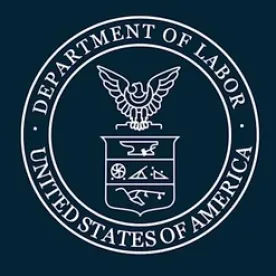On October 30, 2020, the U.S. Department of Labor (the “DOL”) issued a final rule on factors for selecting plan investments, which restricts “do-good” or “ESG” investing. In response to public comments, the final rule rolls back some of the restrictions and burdens from its proposed rule issued in June (summarized here), but it reaffirms the DOL’s longstanding position that ERISA requires plan fiduciaries to treat the financial interests of plan participants and beneficiaries as paramount when making investment decisions. The final rule states that “ESG” funds may be offered in a 401(k)- or 403(b)-type plan where participants direct investments, but the selection is subject to conditions that could pose a challenge.
Consistent with the proposed rule, the final rule generally requires ERISA plan fiduciaries to base investment decisions on financial factors alone and prohibits fiduciaries from selecting investments based on non-pecuniary considerations. Given the lack of a precise or generally accepted definition of “ESG,” the final rule instead refers to “pecuniary” and “non-pecuniary” factors in delineating the relevant fiduciary investment duties to be followed by plan fiduciaries.
The final rule is structured as an amendment to the DOL’s “investment duties” regulation set forth at 29 C.F.R. § 2550.404a-1, and provides as follows:
-
Investment decisions must be based only on pecuniary factors (i.e., factors that a fiduciary prudently determines are expected to have a material effect on risk/return in light of the plan’s investment objectives and funding policy), except in the event of a “tie-breaker” (as discussed below).
-
Consistent with the text of the proposed rule, the preamble once again acknowledges that an “ESG”-type factor could be considered a “pecuniary” factor under certain circumstances. For example, a fiduciary may conclude that board/management diversity or a company’s environmental record would have a material financial effect on the investment.
-
However, the preamble also cautions against concluding too hastily that “ESG”-type factors are actually “pecuniary.”
-
Of note to multiemployer plans, the preamble specifically states that increasing participant contributions or otherwise benefiting union labor generally is not a “pecuniary” factor that may be considered outside of the “tie-breaker” context.
-
-
A plan fiduciary may not subordinate the financial interests of plan participants and beneficiaries to other objectives, and may not sacrifice investment return or take on additional risk to promote non-pecuniary goals.
-
When making an investment decision, a plan fiduciary is required to consider reasonably available alternatives with similar risks in order to satisfy its duty of prudence.
-
The preamble states that this rule does not require scouring the market or considering every possible alternative.
-
-
A plan fiduciary may consider non-pecuniary factors as a “tie-breaker” between two or more investment alternatives if the fiduciary is unable to distinguish them on pecuniary factors alone, provided that the fiduciary documents (i) why considering only pecuniary factors was not sufficient to make the decision, (ii) how the selected investment compares to the considered alternative(s) in light of the plan’s diversification, liquidity, cash flow requirements and funding objectives, and (iii) how the applicable non-pecuniary factor(s) is consistent with the financial interests of the plan participants and beneficiaries.
-
The proposed rule permitted consideration of non-pecuniary factors to break ties only in the case of “economically indistinguishable” investments. The DOL has relaxed the standard in response to public comments questioning the feasibility of the proposed approach.
-
Not surprisingly, the preamble encourages fiduciaries to make “tie-breaker” decisions based on pecuniary factors alone.
-
-
The general requirement to evaluate investments based solely on pecuniary factors applies to a 401(k)- or 403(b)-type plan fiduciary’s selection and retention of available plan investment alternatives (other than brokerage window or self-directed brokerage account investment options). However, the final rule does not categorically prohibit including an investment option that supports non-pecuniary goals (for example, in response to participant demand) if the following conditions are satisfied:
-
The plan otherwise provides a “broad range of investment alternatives”;
-
The decision to include the investment option is based on “pecuniary” factors only (outside of the “tie-breaker” context); and
-
A fund or model portfolio with objectives, goals or principal investment strategies that take non-pecuniary factors into account may not be used as, or as a component of, a qualified default investment alternative (QDIA), even if it may otherwise be permissible as a non-QDIA investment alternative. The DOL suggests in the preamble that plan fiduciaries should review any potential QDIA’s prospectus or similar disclosure document to ensure that it does not include, consider or indicate the use of non-pecuniary factors (including, for example as a “screening strategy,” where certain types of controversial activities or investments are categorically excluded).
-
-
The DOL has helpfully clarified that the final rule applies only to “designated” investment alternatives (e., alternatives that are selected and monitored by plan fiduciaries). The final rule does not apply to self-directed brokerage windows and similar arrangements that enable participants to select investments beyond those specifically designated by the plan.
Although the final rule is set to become effective 60 days after publication in the Federal Register, 401(k) and 403(b)-type plans will have until April 30, 2022 to make any changes that are necessary to comply with the requirements related to the selection or retention of QDIAs.
Key Takeaway: Although the DOL has cleared a path for ERISA fiduciaries to consider “ESG” factors when making investment decisions and to offer “ESG” funds in a 401(k)- or 403(b)-type plan, the path remains relatively narrow as the final rule still requires that selection of the investment option be based solely on pecuniary factors (outside of the “tie-breaker” context). Accordingly, decisions with respect to “ESG” require careful deliberation, balancing of risks, and documentation.







 />i
/>i

